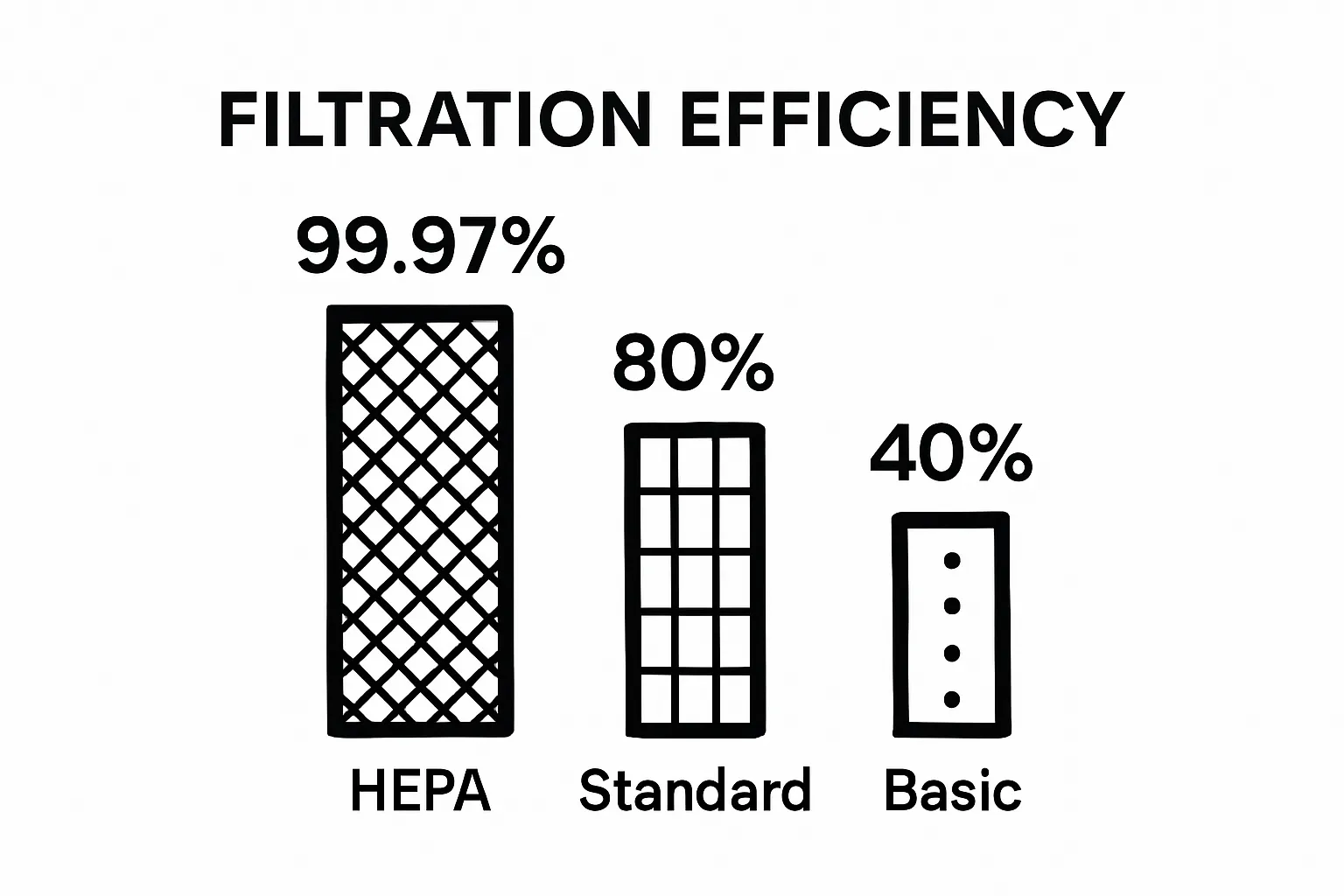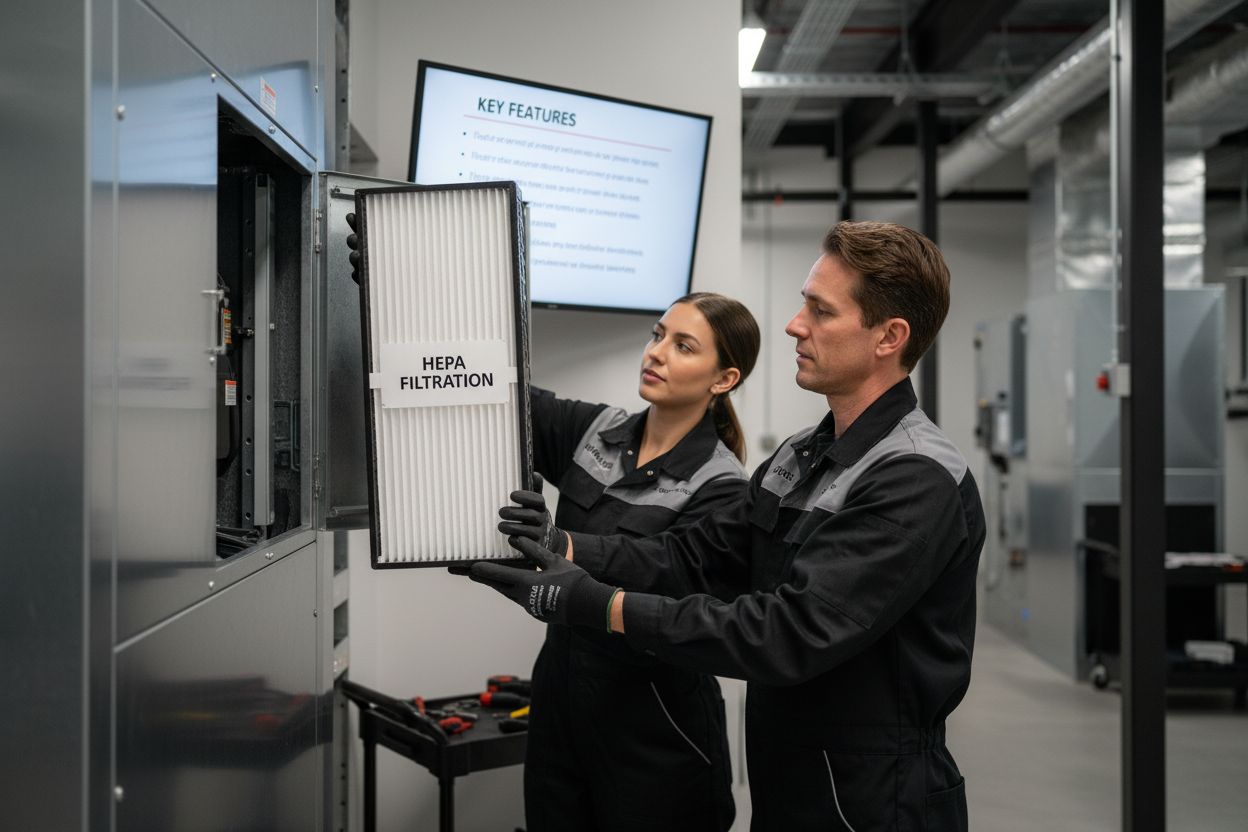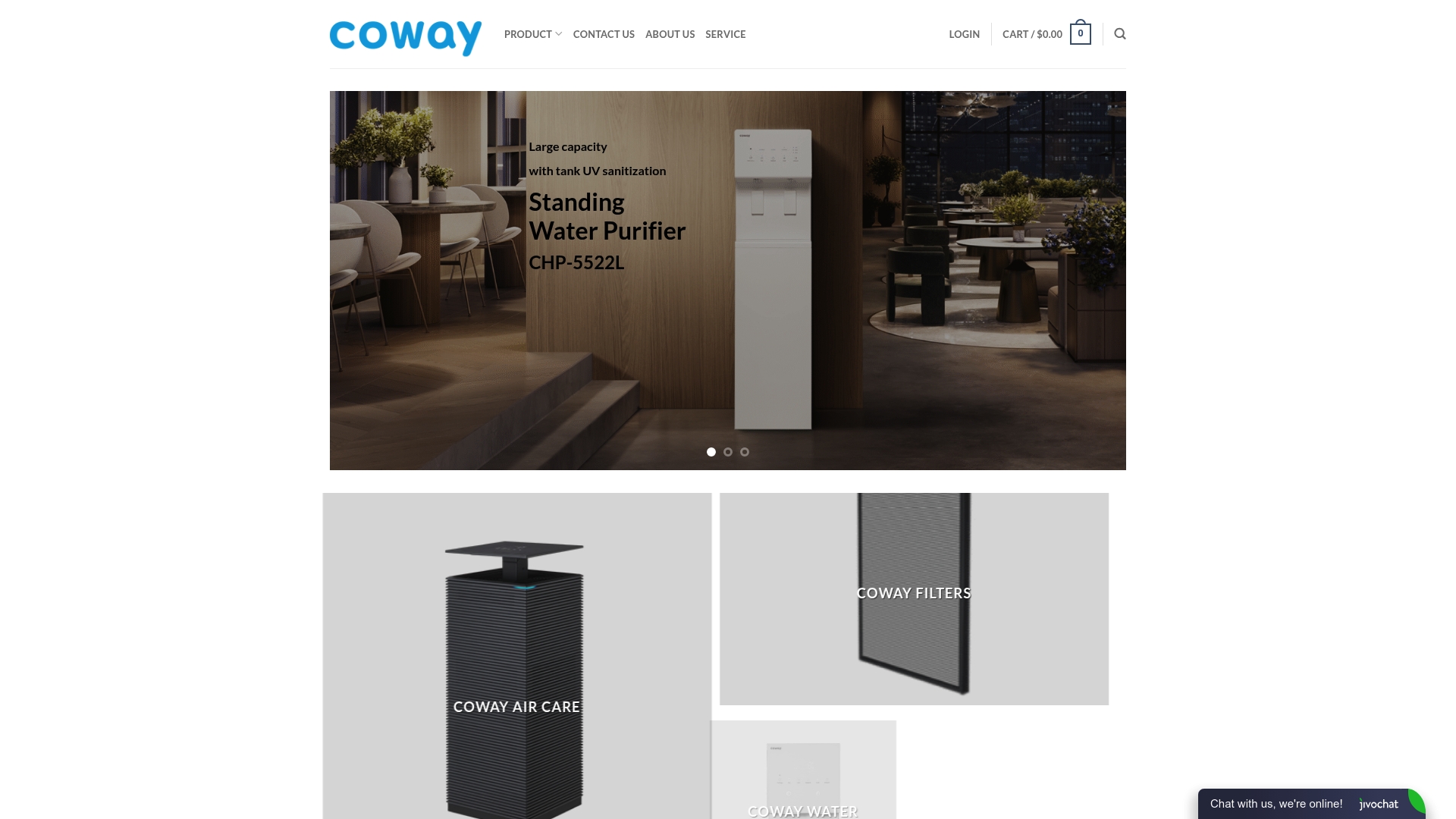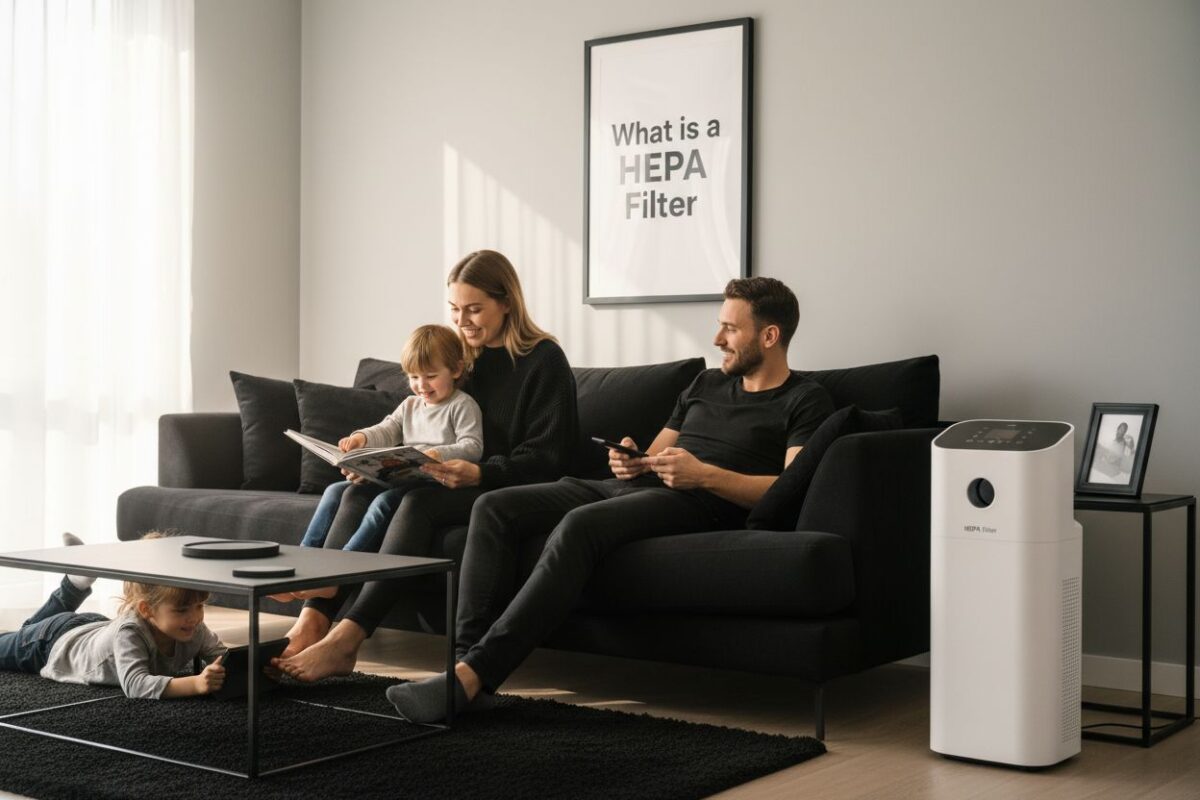Uncategorized
What is a HEPA Filter? Understanding Its Importance
Air pollution inside your own home can be up to five times worse than outdoors according to the Environmental Protection Agency. Most people expect the air indoors to feel safer and cleaner but the truth is that invisible particles lurk in every breath. HEPA filters are not just hype—they actually trap an astonishing 99.97 percent of particles as tiny as 0.3 microns and could be the secret reason you breathe easier without even knowing it.
Table of Contents
- Defining Hepa Filters: What Are They?
- The Importance Of Hepa Filters For Indoor Air Quality
- How Hepa Filters Work: The Science Behind Filtration
- Key Features And Standards Of Hepa Filters
- Applications Of Hepa Filters In Homes And Businesses
Quick Summary
| Takeaway | Explanation |
|---|---|
| HEPA filters capture 99.97% of particles | Designed to filter out airborne particles as small as 0.3 microns, ensuring optimal air quality. |
| Critical for health in various settings | Used extensively in hospitals, clean rooms, and HVAC systems to protect human health from airborne pollutants. |
| Combats poor indoor air quality | Essential for filtering harmful indoor contaminants that can lead to respiratory issues and allergies. |
| Employ complex filtration mechanisms | Utilize processes like diffusion, interception, and inertial impaction to maximize particle retention. |
| Require rigorous testing for certification | HEPA filters must meet strict performance standards to ensure they provide reliable air purification. |
Defining HEPA Filters: What Are They?
HEPA filters represent a pinnacle of air filtration technology designed to remove microscopic particles from the air with exceptional precision. According to the U.S. Department of Energy, these specialized filters can capture at least 99.97% of airborne particles as small as 0.3 microns – a standard that sets them apart from conventional air filtering methods.
The Science Behind HEPA Filtration
At their core, HEPA filters utilize a complex mechanical filtration mechanism that goes far beyond simple screening. These filters are constructed using densely packed layers of extremely fine materials like fiberglass, cotton, or synthetic materials arranged in a random, interwoven pattern. This unique structure creates a maze-like network that traps particles through multiple interception mechanisms:
- Direct Interception: Large particles get trapped directly within the filter fibers
- Inertial Impaction: Medium-sized particles collide and stick to filter fibers
- Diffusion: Smallest particles move erratically and eventually become trapped
Practical Applications and Importance
The Environmental Protection Agency highlights that HEPA filters are critical in environments requiring superior air quality. These filters find extensive use in:
- Medical facilities and clean rooms
- High-end air purification systems
- Residential and commercial HVAC systems
- Vacuum cleaners
- Aerospace and technology manufacturing
By capturing microscopic contaminants like dust, pollen, bacteria, and even some virus particles, HEPA filters play a crucial role in protecting human health and maintaining clean indoor environments. Their ability to remove particles smaller than the human eye can perceive makes them an essential technology in our ongoing battle against airborne pollutants.
The Importance of HEPA Filters for Indoor Air Quality
According to the Environmental Protection Agency, indoor air can be significantly more polluted than outdoor air, making high-quality air filtration crucial for maintaining healthy living environments. HEPA filters emerge as a powerful solution in combating these invisible threats, offering comprehensive protection against a wide range of airborne contaminants.
Health Risks of Poor Indoor Air Quality
Indoor air can harbor numerous harmful particles that pose serious health risks. These microscopic invaders include:
- Dust mites and their waste products
- Pollen and seasonal allergens
- Pet dander
- Mold spores
- Bacteria and virus particles
- Smoke particles and volatile organic compounds (VOCs)
Prolonged exposure to these contaminants can lead to respiratory issues, allergic reactions, and potential long-term health complications. People with asthma, children, elderly individuals, and those with compromised immune systems are particularly vulnerable to these airborne hazards.
The following table organizes key airborne pollutants found indoors, their common sources, and the health risks associated with each, as described in the article. This summary helps readers understand why comprehensive indoor air filtration is critical.
| Pollutant Type | Common Sources | Health Risks |
|---|---|---|
| Dust mites & waste | Bedding, carpets, upholstery | Allergies, asthma irritation |
| Pollen & seasonal allergens | Windows, doors, outdoor air | Allergic reactions, hay fever |
| Pet dander | Cats, dogs, household pets | Allergies, respiratory issues |
| Mold spores | Damp areas, bathrooms | Respiratory problems, allergic responses |
| Bacteria & virus particles | Human occupants, surfaces | Infections, increased illness risk |
| Smoke & VOCs | Smoking, cooking, cleaning | Lung irritation, long-term health effects |
Comprehensive Protection Through Advanced Filtration
HEPA filters provide a multi-layered defense mechanism against indoor air pollutants. Learn more about indoor air quality strategies to complement your air filtration efforts. These filters work continuously to:
- Remove ultra-fine particles as small as 0.3 microns
- Reduce allergen concentration in living spaces
- Minimize respiratory irritants
- Create a cleaner, healthier indoor environment
By capturing 99.97% of airborne particles, HEPA filters significantly improve air quality, providing a critical barrier against potential health risks. Whether in homes, offices, medical facilities, or industrial settings, these advanced filtration systems represent a key technology in protecting human health and well-being.
How HEPA Filters Work: The Science Behind Filtration
According to the Environmental Protection Agency, HEPA filters employ a sophisticated mechanical filtration process that goes far beyond simple sieving. These advanced filters capture microscopic particles through three primary interception mechanisms, creating an intricate defense system against airborne contaminants.
Particle Capture Mechanisms
The science behind HEPA filtration involves complex physical interactions between air particles and filter fibers. These interactions occur through multiple distinct processes:
To help clarify how HEPA filters trap different sizes of particles, the table below summarizes the three main particle capture mechanisms mentioned in the article, along with the type and size range of particles each targets.
| Mechanism | Target Particle Size | How It Works |
|---|---|---|
| Diffusion | Under 0.1 microns | Smallest particles move erratically and collide with fibers |
| Interception | Medium (follows airflow) | Particles contact filter fibers directly along airflow path |
| Inertial Impaction | Medium/Large | Particles cannot navigate around fibers and become trapped |
- Diffusion: Smallest particles (under 0.1 microns) move erratically, increasing their likelihood of colliding with filter fibers
- Interception: Particles following airflow are captured when they directly touch filter fibers
- Inertial Impaction: Medium-sized particles cannot navigate around filter fibers and become trapped
Understanding Filter Architecture
Learn more about advanced filtration technologies to appreciate the complexity of these systems. HEPA filters are engineered using densely packed layers of extremely fine materials like fiberglass, synthetic polymers, and cotton. These materials are intentionally arranged in a random, interwoven pattern that creates a maze-like network designed to maximize particle capture.
The filter’s effectiveness is measured by its ability to trap 99.97% of particles as small as 0.3 microns – a size considered most challenging to capture.
This precise engineering ensures that even the most minute contaminants are effectively removed from the air, providing superior filtration performance across diverse environmental conditions.
Key Features and Standards of HEPA Filters
According to the Department of Energy, HEPA filters represent a rigorous standard of air filtration that demands precise performance specifications and manufacturing excellence. These critical standards ensure consistent, high-quality air purification across various applications.
Performance Benchmarks and Classification
HEPA filters are classified based on their ability to remove microscopic particles with exceptional efficiency. The primary performance standard requires filters to:

- Capture 99.97% of particles 0.3 microns in diameter
- Demonstrate consistent filtration performance under varied environmental conditions
- Maintain structural integrity during extended use
- Provide reliable particle removal across different airflow rates
Rigorous Testing and Certification
Learn more about filtration technology standards to understand the comprehensive evaluation process. Professional laboratories conduct extensive testing to validate HEPA filter performance, which includes:
- Particle counting and size distribution analysis
- Airflow resistance measurements
- Pressure drop assessments
- Durability and long-term efficiency evaluations
These stringent testing protocols ensure that HEPA filters meet or exceed established performance criteria, providing consumers and industries with reliable air purification solutions. The certification process guarantees that only filters meeting the most demanding standards receive official HEPA classification, protecting end-users from substandard filtration technologies.

Applications of HEPA Filters in Homes and Businesses
According to the Centers for Disease Control and Prevention, HEPA filters have become increasingly critical in creating safer, cleaner environments across residential and commercial settings. Their versatility allows them to address a wide range of air quality challenges in diverse contexts.
Residential Air Purification
In home environments, HEPA filters play a crucial role in protecting families from airborne health risks. Key residential applications include:
- Air purifiers in living spaces
- Bedroom air cleaning systems
- Portable filtration units for allergy sufferers
- Vacuum cleaners with advanced filtration
- HVAC system upgrades
Homeowners with children, pets, or individuals with respiratory sensitivities benefit most from these advanced filtration technologies, reducing exposure to dust, pet dander, pollen, and other microscopic irritants.
Commercial and Specialized Environments
Learn more about indoor pollutant management to understand the broader impact of HEPA filtration. Beyond residential use, these filters are essential in:
- Healthcare facilities and hospitals
- Pharmaceutical manufacturing
- Clean room environments
- Aerospace and technology laboratories
- Industrial settings with airborne particle concerns
In these professional contexts, HEPA filters are not just an option but a critical requirement for maintaining sterile, safe working conditions and protecting sensitive processes from microscopic contamination.
Ready for Cleaner, Healthier Air at Home?
You have just discovered how vital HEPA filters are for protecting your loved ones from invisible health risks like dust, allergens, and airborne bacteria. If indoor air quality is a worry in your home, you are not alone. Many families struggle with unseen contaminants that can trigger allergies or worsen respiratory problems. Coway’s commitment to advanced filtration technology means you never have to compromise on the safety and well-being of your family. For more information on effective air purification and cutting-edge solutions, check out our Uncategorized Archives for guidance and insights.

Choose peace of mind now. Discover the science-backed power of Coway’s air purifiers and water treatment products on https://cowayswaterpurifier.com. Explore models designed to keep your home safer and healthier, backed by trusted features and comprehensive support. Do not wait for air quality issues to become a problem—take the next step and invest in better air today.
Frequently Asked Questions
What is a HEPA filter and how does it work?
HEPA filters are specialized air filtration systems that remove at least 99.97% of airborne particles as small as 0.3 microns. They work through mechanical filtration mechanisms, capturing particles through direct interception, inertial impaction, and diffusion.
Why are HEPA filters important for indoor air quality?
HEPA filters significantly improve indoor air quality by removing harmful particles like dust, pollen, mold spores, and smoke. They play a crucial role in creating healthier living environments and reducing the risk of respiratory issues and allergies, especially for vulnerable populations.
How often should HEPA filters be replaced?
The replacement frequency of HEPA filters depends on usage and specific manufacturer guidelines. Generally, they should be replaced every 6 to 12 months for optimal performance, especially in high-use environments or during allergy seasons.
Can HEPA filters remove viruses and bacteria from the air?
Yes, HEPA filters can capture some virus particles and bacteria, helping to reduce their presence in the air. By filtering out these microorganisms, HEPA filters contribute to overall improved air quality and reduced health risks.
Recommended
- Understanding the Role of Filtration Technology – Coway Water Purifier
- Understanding Why Change Purifier Filters Matters for Health – Coway Water Purifier
- Understanding Indoor Pollutants and Air Purifiers – Coway Water Purifier
- Understanding Why Maintenance Matters for Purifiers – Coway Water Purifier

